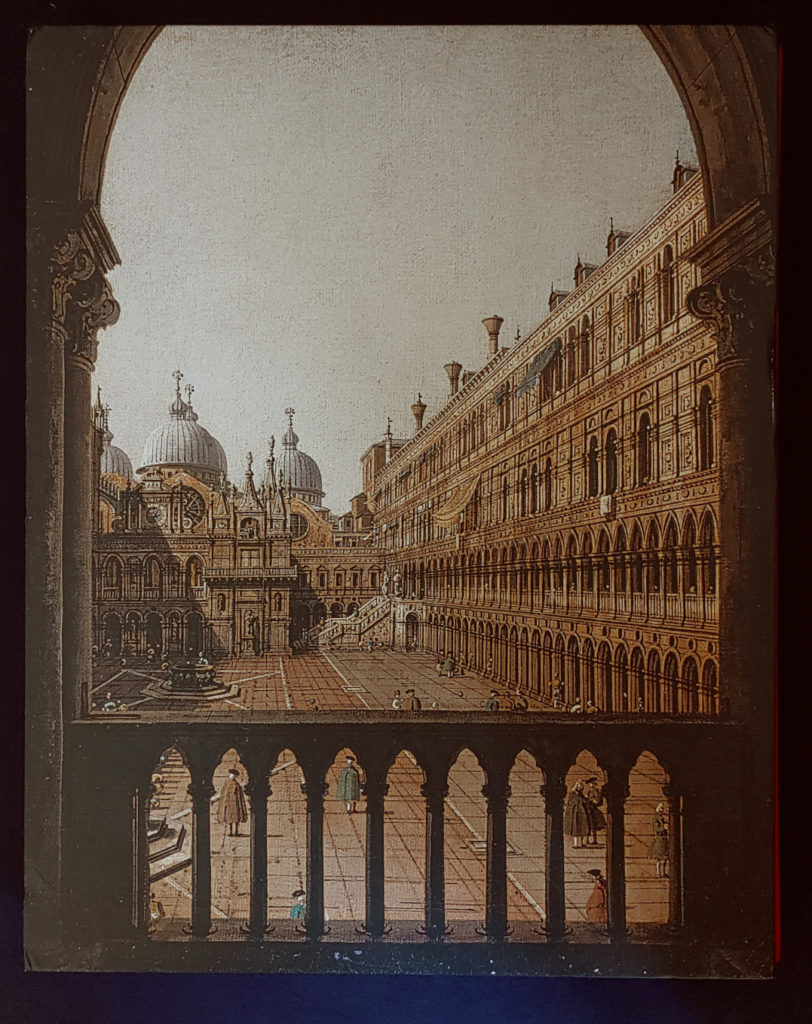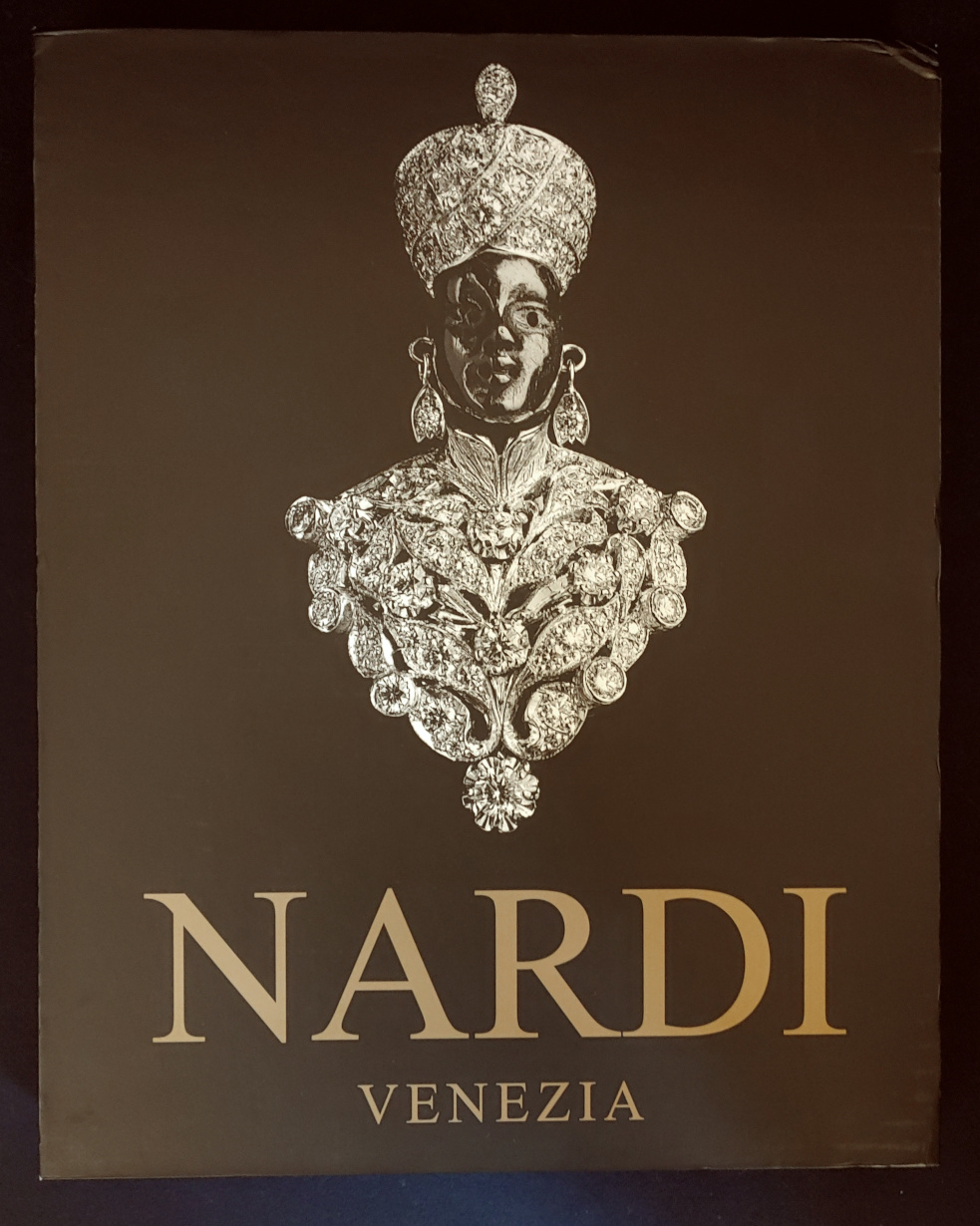Venetian Jewelry House Nardi seems to be fallen out of time – one shop, one address, one family. No marketing, no international presence, no bowing to the changing zeitgeist.
The current head of the family, Alberto Nardi, son of Sergio and grandson of Giulio, continues the family business from the premises at San Marco Square 69. The shop had never been more than a few metres from today’s position. The Nardis moved only around San Marco square, avoiding Aqua Alta and other unpleasant issues. Today the shop occupies 5 arches of the colonnades, but is still very discreet. To my ongoing shame I must say I overlooked the shop when I was in Venice some time ago. It gets more embarrassing as I passed San Marco Square every day and being such a window shopper when it comes to jewellery. The knowledge of Nardi being there must have gotten overwhelmed by the presence of the city itself, which is the only acceptable explanation anyway.
The sumptuous book about the family and their art is an authorized biography / coffee-table art book. Alberto Nardi worked with author (and Nardi client) Nicholas Foulkes on preserving the spirit of the family on 167 pages. Although the Nardis come originally from Florence, they took to Venice like a fish to water. Their jewellery is inspired by the city and its history, the all-encompassing beauty and the perfection of the buildings.
The Nardis aimed in the heyday of Venice – glamour at a clientele who wanted to bring a memory of Venice back home. The 1950ies and 1960ies were the unrivalled time of luxurious travel, of a jet-set comprising of the Café Society (the superrich, the beautiful, the gigolos, the artists) who travelled the Cote d’Azur and the Italian coast in a way that is almost forgotten today. There was no mass tourism, normal people could watch the pictures in newspapers and dream. Tourism did awake slowly. People did start to venture out after the Second World War was over and the economy recovered, but the classes were clearly separated by money. One fascinating detail should not be forgotten, though – people could come pretty close to their stars. The feeling of threat from fans among the chic and famous was much less pronounced than today.
Nardi’s jewellery has the forms of arches of palazzi with their finely-chiselled bows, of bridges like the one at Rialto made into rings, of Venetian windows set in gold and precious stones, of gondolas in exquisite proportions and flowers whose perfection rivals’ nature. The back cover of “Nardi” shows San Marco, and it shows also all those inspirations the family has to create new artworks in gold and other precious materials. The windows, the cupolas, the arches – you name it.

The most famous Nardi jewel is the “Moretto”, as seen on the front cover of Nicholas Foulkes book. It’s the bust of a turbaned or crowned Black man over and over covered in diamonds or precious stones. The first Moretto from Nardi was crafted in the 1930ies and they are still made today. There quite a few competing explanations why that unusual jewel came to be seen as typically Venetian. The Moretti are since a very long time a known jewel in the area of the Eastern part of Northern Italy and the Northern part of Croatia. They seem to come from the Fiume region, today in Croatia, and were good luck charms of fishermen (I assume not in the form of a brooch). Venice had a history of interaction with the Turkish Ottoman empire and before with Constantinople. The latter was plundered by Venice in the year 1204 and changed Venice from being a city state of cunning and greedy trader-sailors to a fantastically rich and beautiful city state of cunning and greed trader-sailors.
The famous play “Othello” springs into mind as well, Shakespeare’s tale of the noble Black man Othello being horribly set up by White Iago, acting out of pure envy and career ambition, causing a tragedy. Why Giulio Nardi took the design up, we don’t know. This jewel became the most famous of the Nardi brand and was worn by princesses, actresses and heiresses.
To today’s eyes it looks a bit weird, to be honest, although the craftmanship is out of the question. It took me a while to understand why it feels weird to me. There are basically no brooches depicting White men. Or women. Or children. One of the very few I have ever seen is in the Nardi book itself, depicting Casanova. Most brooches show animals, trees, flowers, means of transport (cars, ships and so on), structural and abstract designs. There are very few human shapes in jewellery. If there are, they show an occupation, like a chimney sweeper (for good luck) or a clown (attitude to life).
If there’d be brooches of Black and White kings, I’d wear them together, like the Holy Three Kings in the bible’s Christmas story. One Black Moretto alone – no, not really. Certainly not the one wearing two platters with fruits, although that one is a lone exception. Most Moretti look like kings and I want to see them as kings. The most impressive one has a fire opal in bright orange in the form of a sun on his chest. What is beautiful, stays beautiful. But what is appropriate does change with times.
Nardi stands true to its roots, which is something to admire. Hopefully the family will continue as successful in the future and stand out to form the beauty of Venice into small souvenirs’ to take home.
All rights to the book belong to:
Foulkes, Nicholas: Nardi Venezia, 2012. Pulished by Assouline Publishing, 601 West 26th Street, 18th Floor, New York, NY 10001, USA, printed in China. ISBN – 9781614280491

